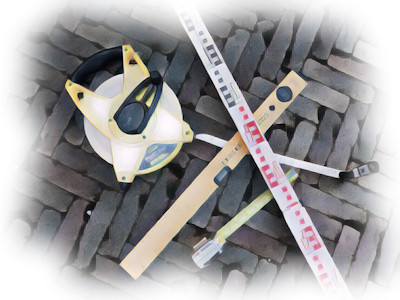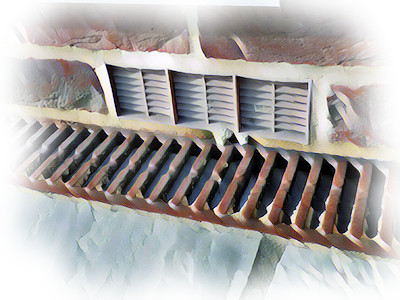Setting Out
This refers to the critical preliminary tasks that should always be undertaken before any paving is laid. How big should it be? How will that curve fit in? How do I use a spirit level? What about the levels for drainage? This section covers the basics of surveying, showing how these skills are used to ensure the paving looks as good as it possibly can.
Gradients and Falls
This page gives an overview of the concept of gradient and how falls are used in the paving and drainage trades.

Geometry for Paving and Streetmasonry
This page provides a guide to the geometry and geometrical terms used for paving and streetmasonry.

Setting Out - Construction lines, Perpendiculars and Arcs
All paving and drainage works are set out using basic geometry, mathematics and a few simple measuring and positioning tools. This first page in thgis section looks at the basic principles of construction lines, perpendiculars and arcs.

Setting Out - Working Lines and Levels
This page considers the use of string lines and the importance of levels when setting out any paving or drainage project. It explains the concept of falls and the importance of working to minimum gradients.

Setting Out - Boning Rods
Boning Rods and Sight Rails are tools as old as time but still important and extremely useful when setting out paving and drainage projects. This page explains the simple concepts underpinning their use and shows how they are employed on real life sites.

Setting Out - Automatic and Laser Levels
Automatic and laser levels are essential tools for accurate setting out of levels and falls on larger sites. This page looks at how they are used and explains how they can be used to ensure adequate drainage of paving and correct falls within sewer systems.

Setting Out Obstructed Arcs
Setting out an arc is an elegantly simple task, but every now and again, the origin point is not available for all sorts of reasons. This page looks at how arcs are set out in such situations.

All About Damp Proof Courses
A look at the relationship between paving and damp proof courses (DPC), and suggestions for dealing with problems such as high paving levels or low DPCs.

